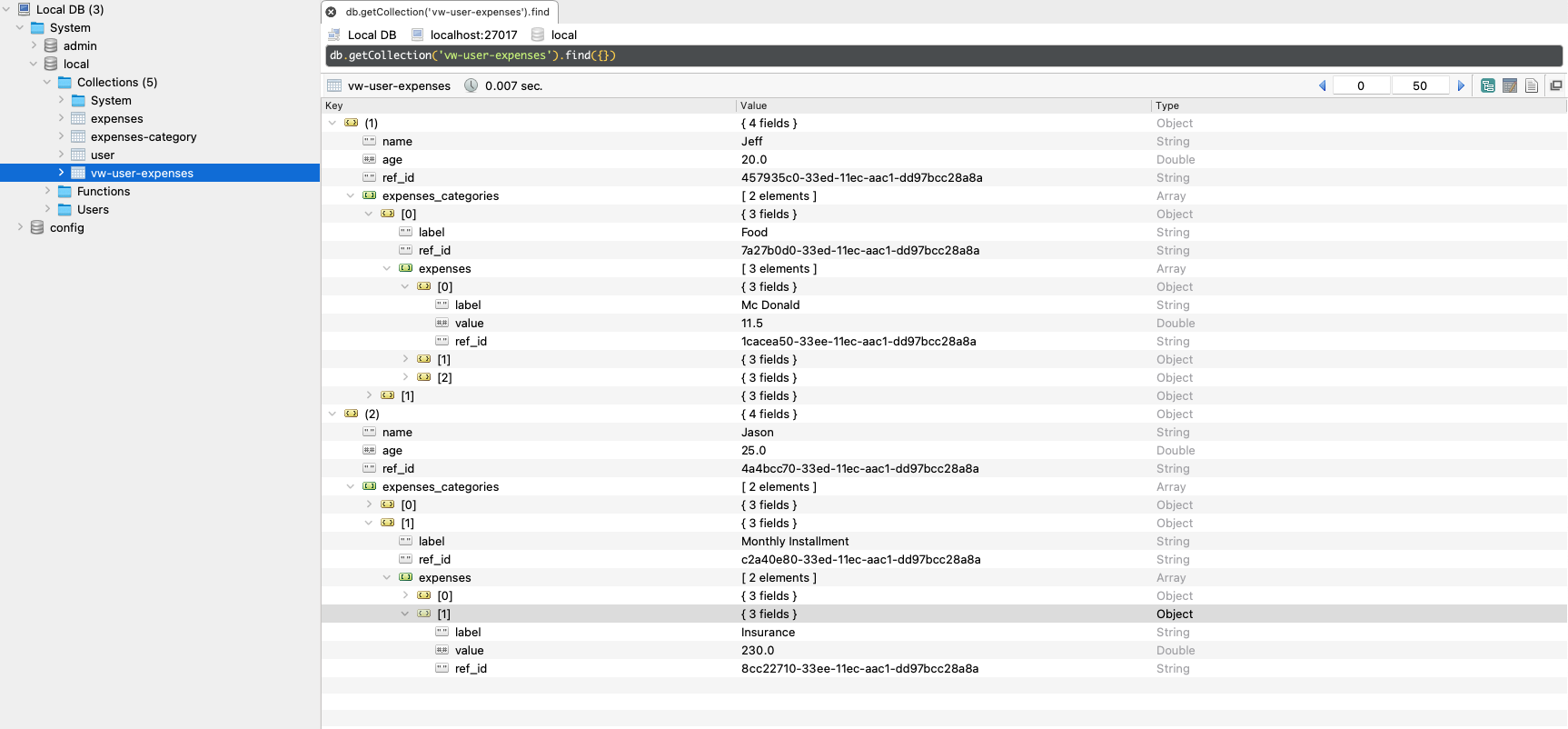Prerequisite
Please ensure you have gone through our previous article Mongo Join Collection https://jeffdevslife.com/p/mongodb-join-multiple-collections-with-lookup/as we will be using back the data from these 3 collections:
- User
- Expenses-Category
- Expenses
Recap from previous article “Mongo Join Collection”
Each user will have different expenses category while each expenses category will have one or more expenses record(s)
Previously, we are using aggregation method with $lookup operator in order to get the combine data from these 3 collections.
How CreateView works
db.createView(<view>, <source>, <pipeline>, <options>)
- view - name of view to be created
- source - collection we are referring
- pipeline - aggregation pipeline stage where we able to use $lookup, $match, $unwind and other operators
- options - Additional options for the method.
CreateView Query
Query below is running in Robo 3T GUI https://robomongo.org/download
db.createView('vw-user-expenses','user', [{
$lookup: {
from: "expenses-category",
let: { "userRefId": "$ref_id" },
pipeline: [
{
$match: {
$expr: { $eq: ["$user_ref_id", "$$userRefId"] }
}
},
{
$lookup: {
from: "expenses",
let: { "categoryRefId": "$ref_id" },
pipeline: [
{
$match: {
$expr: { $eq: ["$expenses_category_ref_id", "$$categoryRefId"] }
}
},
{
$project: {
_id: 0,
ref_id: 1,
label: 1,
value: 1
}
}
],
as: "expenses"
},
},
{
$project: {
_id: 0,
__v: 0,
user_ref_id: 0
}
}
],
as: "expenses_categories"
}
},
{
$project: {
_id: 0,
__v: 0
}
}])Result
Explanation
- We uses prefix
vwinvw-user-expensesfor theview nameso that we could know this is actually a view instead of collection. It might have different UI for other Mongo GUI tool like Mongo Compass to identify the ‘views’ - Since collection
Useris the highest layer among 3 collections, therefore we need to pass the collection nameuseras our second parameter which is undersource - For the pipeline it’s actually modified from our previous article which is from https://jeffdevslife.com//p/mongodb-join-multiple-collections-with-lookup/#lookup. What we modified was removing the
$matchoperator so that now it able to find every documents in our database instead of find by matching theidparameter - As you can see the final result image above, our
viewsdata are actually the query result from our aggregation pipeline which is same as our result in previous article https://jeffdevslife.com/p/mongodb-join-multiple-collections-with-lookup/#clean-up or filtered_response.json. - So we can now run our query in this created view such as :
- There are few things we need to take note and get advantages from it
- It create a view of our aggregation pipeline data without running a complex query
- It will automatically update our view when we inserted new document in one of the related collection. For example, when we insert a new document in
usercollection, theviewwill be automatically create and update a new document for it. - All documents are read-only. We CANNOT directly create / insert new document in
view. It must be referring to the existing collection


